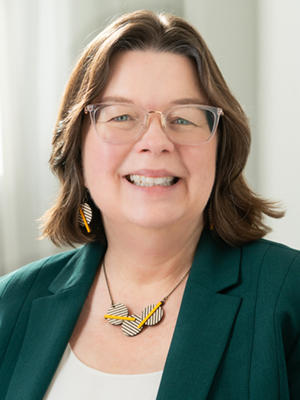President's Page
19th President Michelle B. Larson, PhD

Dr. Michelle Larson is the 19th president of Clarkson University, being appointed by the Board of Trustees in 2025. A physicist herself, she leads our 128-year-old university as someone who has personally relied on the skills obtained from earning a technical/science degree throughout her dynamic career.
Dr. Larson earned her bachelors, masters and PhD degrees in physics from Montana State University, where her passion was sparked for progress in service of society. She vividly remembers the first time she was curious about something not-yet-understood (by anyone!) and the thrill of chasing new understanding that followed. She’s made it her life’s work to help others feel that way too.
Twenty-two years of her professional career has been at higher education institutions in rural America, and it is where she feels most at home. Her land-grant university roots fuel a commitment to progress in service of society, which has shaped Michelle’s career’s work at institutions that support people to discover the meaningful role they can play in their own communities - the same commitment of Clarkson’s founders and our University today.
Dr. Larson is an institutional leader who leads with vision, purpose, and in collaboration with the organization’s tapestry of talent. Michelle has executive experience in the complex industries of higher education and landmark museums, where she has a demonstrated record of navigating challenges and leveraging opportunities with diverse stakeholders, both internal and external to the institution.
Prior to Clarkson University, Michelle was President and CEO of the Adler Planetarium in Chicago, managed a geographically distributed cosmic ray experiment at Caltech, was Deputy Director of a National Science Foundation Physics Frontier Center on Gravitation Waves at Penn State, and developed her executive leadership skills as Vice Provost at Utah State University - a nine-campus, public-University system.
Michelle has served on a variety of advisory boards, including the NASA Advisory Council Science Committee (a FACA committee), the NANOGrav Advisory Board, and is currently on the American Physical Society's Panel on Public Affairs.
Michelle‘s husband Shane is also an astrophysicist, and their daughter Kate is studying chemistry at the University of Connecticut. The family cat Lyra, is named after the constellation.
